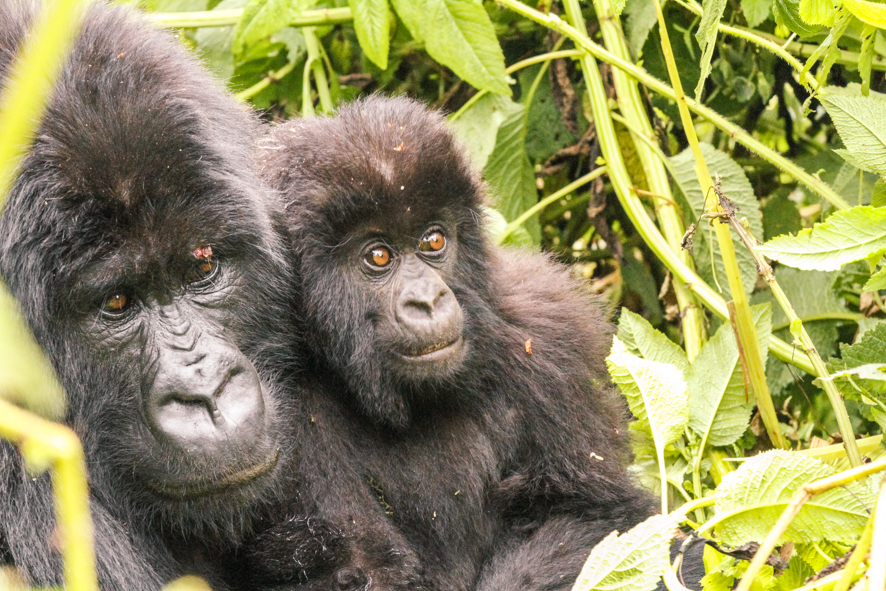
What it’s like to go gorilla trekking in Rwanda
We were lucky to be invited by the Rwanda Development Board to take part in a week of activities to support and promote sustainable conservation with a focus on the mountain gorillas.
With less than 900 mountain gorillas left in the wild, the species is critically endangered. So you can imagine how excited we were to be given an opportunity to help raise awareness.
During this week we attended the “Conversation on Conservation” conference and learned about the efforts of Tara Stoinski and her team at the “The Dian Fossey gorilla fund international”, to save those gentle giants. We also attended the 13th edition of Kwita Izina, the yearly baby naming ceremony where 19 gorillas were named. And the highlight for us was definitely our trek to meet the mountain gorillas in the wild.
What makes mountain gorillas so special?
Let’s start by saying that a study by the Wellcome Trust Sanger Institute in Cambridge confirmed that we share over 98% of our DNA with them. Only chimpanzees do better with a staggering 99%! That number really starts making sense when you look at their human-like hands and see them interact with each other.
This iconic species is one of the world’s most endangered mammal species due to poaching, disease and habitat loss. But the good news is that the efforts of the Rwandan government and other organisations are starting to pay off. Since 2010, we’ve seen a 26% increase in the mountain gorilla population.
Meet the mountain gorillas of Rwanda
20 families of about 300 mountain gorillas currently live in the Volcanoes National Park located in Rwanda’s North-West corner. Out of these, only 12 can be visited once daily by small groups of 8 people max. The remaining 8 families are being studied by the Karisoke research center in order to learn more about those amazing creatures.
You can also go gorilla trekking in the Bwindi impenetrable forest in Uganda and Congo but from what we heard it’s a lot easier in Rwanda. The tracks are easier and the visibility is usually better. Let’s put it this way, in Rwanda, you’re 100% sure to see them, although, technically, nothing is guaranteed with mother nature.
The duration and difficulty of the trek to meet the gorillas vary based on several factors:
- the family you are assigned to: the trek is harder to get to the Susa family for example,
- where they are located at that time: families are constantly on the move, so the distance is different from one day to the next,
- the weather: the trek is harder after a heavy rain,
- and the season: in the rainy season, gorillas tend to venture in the lower parts of the forest.
Getting ready to trek
Your day starts at 7am when you check-in at park headquarters. Local dancers, colourfully dressed, perform a traditional dance of heroes. Then it’s time to split into groups of 8 people. This is when you discover which family you will be visiting on the day. Groups are created based on numbers and physical abilities (some families are easier to get to than others). Depending on the family and the conditions, the hike can range anywhere between 1 and 5 hours. We were assigned the Susa family, and judging by the excitement of our travel companions – yes Charlotte, you in particular 😛 – it was a lucky draw. Apparently while the trek is harder, this family is easy to spot and very welcoming.
In order to reduce the impact on the gorillas, rules are pretty strict. Each mountain gorilla family only welcomes 1 group of 8 visitors for 1 hour per day.
Your guide gives you some information about the trek and your gorilla family before hopping on a car to get to the track. Your starting point for the trek depends on the family you’re going to meet.
For the Susa family, the track starts in the nearby village where porters are waiting for you. Hiring one is a good idea as it helps support the community. Some of them are former poachers, and tourism offers them a sustainable alternative. They will carry your stuff and help you in case you need a hand going uphill! Iradukunda, Rafika’s porter was incredibly nice and helpful.
Who is the Susa Family?
The Susa family used to be the largest family, but they split in several smaller groups a couple of years ago. It’s now composed of 3 silverbacks, 7 females, 2 black backs, 2 juveniles and a baby.
The alpha male, Kurira (the cryer) is 36 years old. His back went silver at around 12 years old. Think of it as our hair turning grey as we grow older. He decides where to go, when to stop, and when to set camp. Where he goes, the family follows. Oh, and officially, he’s the only one allowed to mate with the females of the group (“jiggy jiggy”). Well, it’s not that simple with gorillas… but what happens in the volcanoes national park stays in the volcanoes national park 😛
The black backs are about 9 to 12 years old. Think of them as teenagers. They’re the group’s troublemakers. The baby, later named Inyange, meaning handsome & smart, was soooooooo cuuuuuute! Baby gorillas are named later in the year during the annual Kwita Izina ceremony. It’s named after the ancestral baby naming ceremony that happened after the birth of a newborn in Rwanda. As each gorilla has a distinct personality, guides and trackers have time to see them interact with the group and pick a name that fits them best.
What do I need for the trek?
In terms of equipment, make sure you have sturdy shoes (potentially boots if you’re trekking after a heavy rain), long pants tucked in your socks (to avoid ant bites and nettles) and a long sleeve t-shirt.
While it’s hot when you’re walking, it’ll be a bit colder in altitude, especially when you stop to enjoy your time with the gorillas, so make sure you bring a fleece and potentially a light rain jacket.
Some people take gloves against nettles. While they can be useful for certain gorilla groups, we didn’t really need them for the Susa family.
Finally, bring lots of water! We had about 1.5L per person, but it’s recommended to carry at least 2L per person when it’s hot. And while you can’t keep food with you when you’re with the gorillas, you can definitely bring some for the trek. Remember, the walk might be long.
Tracking the mountain gorillas in Rwanda
At about 8.30 am, everyone’s set and it’s time to head off. The group walks toward the volcanoes going through farmland. In your group you’ll find your guide, your seven travel companions, porters and an armed guard for protection (mainly against buffaloes).
When you enter the endemic bamboo forest, your guide will brief you on your encounter with the mountain gorillas. That includes the sounds to make to communicate with them. It’s getting real and more and more exciting! It looks like this:
– what to do when a mountain gorilla tries to charge (around 4min)
– followed by a funny story 😀
In Rwanda,the tracks to the mountain gorillas are easier than the ones in Uganda or Congo. Plus it was the dry season, so the track was in very good condition.
However, remember that you are walking between 2,500 and 3,000 meters above sea level. That means that you quickly get out of breath and going uphill is physically demanding. Having said that, your guide will set a slow but steady pace and stop regularly to allow everyone to catch their breath. If you’re reasonably fit, you’ll be fine!
Your guide will follow directions given by the trackers who locate your gorilla family earlier in the day. The higher they are, the harder the trek. Before the 2 hours mark, our guide tells us that the Susa family is actually walking in our direction, so we will be meeting them earlier than expected. Luck, I told you!
When you get close to the gorillas, at about 50 meters, you leave the bags behind with the porters and only bring your camera (and your jumper). No food or water allowed.
The unforgettable encounter
As you walk the last few meters to the gorillas, your guide will start mimicking gorilla sounds to inform them of your presence. He tells them “we’re friends”. Rapidly, the dominant silver-back answers back and allow us to get closer to the family. It really feels like those gentle giants are not bothered by humans presence at all. Actually, it’s almost like they don’t care. Haha! That’s perfect. They just go about their daily lives and do what mountain gorillas do. Eat, play and roll around, cuddle and of course… sleep.
There are a few rules to follow during your visit to minimise your impact on the gorillas:
- keep your voice low
- no sudden movements as they might be interpreted as a sign of aggression
- keep a safe distance from the gorillas to avoid the transmission of human diseases
- no flash photography
- visits are limited to 1 hour max – no exceptions
Each encounter is different. And yours will be unique. One thing is certain, it was a truly incredible and humbling experience. We’ve travelled a fair bit and saw tons of wildlife, but this encounter is something we’ll never forget.
How about photography?
As we were going on safari right after our trip to Rwanda, we were well prepared with 2 DSLR bodies. One equipped with a wide angle to photograph gorillas in their habitat (Canon 15-85mm 5.6), and one with a telephoto lense for portraits (Canon 70-200mm 2.8). It’s a good idea to have a lense with a wide aperture to get as much light in as possible as some of the families stay hidden in the bamboo forest in low light condition. We were lucky enough to meet our family in an open space making taking good photos easier.
But let’s be honest, you don’t need all that equipment to get good shots. In most cases, a simple point and shoot will do the work. But if you love wildlife and photography, it might be the time (or a good excuse) to look into investing in a DSLR and a portrait lense.
Don’t forget to check you have enough space on your memory card (and/or have spare ones) and enough battery. You don’t want to run short in the middle of the action.
Taking a waterproof bag with you might be a good idea as it could start raining half way through your adventure. Remember, nature is unpredictable.
Most importantly, don’t forget to put your camera down and look around. It’s a unique experience that will most likely only happen once in your life. Take the time to appreciate those beautiful creatures that are welcoming you. Watch them interact with each other. There is something truly unique about being there, with the mountain gorillas. Enjoy this experience to the fullest.
Time flew by so quickly. We couldn’t believe it when our guide told us it was time to go. One last look over our shoulders, and it was over. If you love authentic wildlife encounters, you should definitely add “meeting a mountain gorilla” on your bucket list!
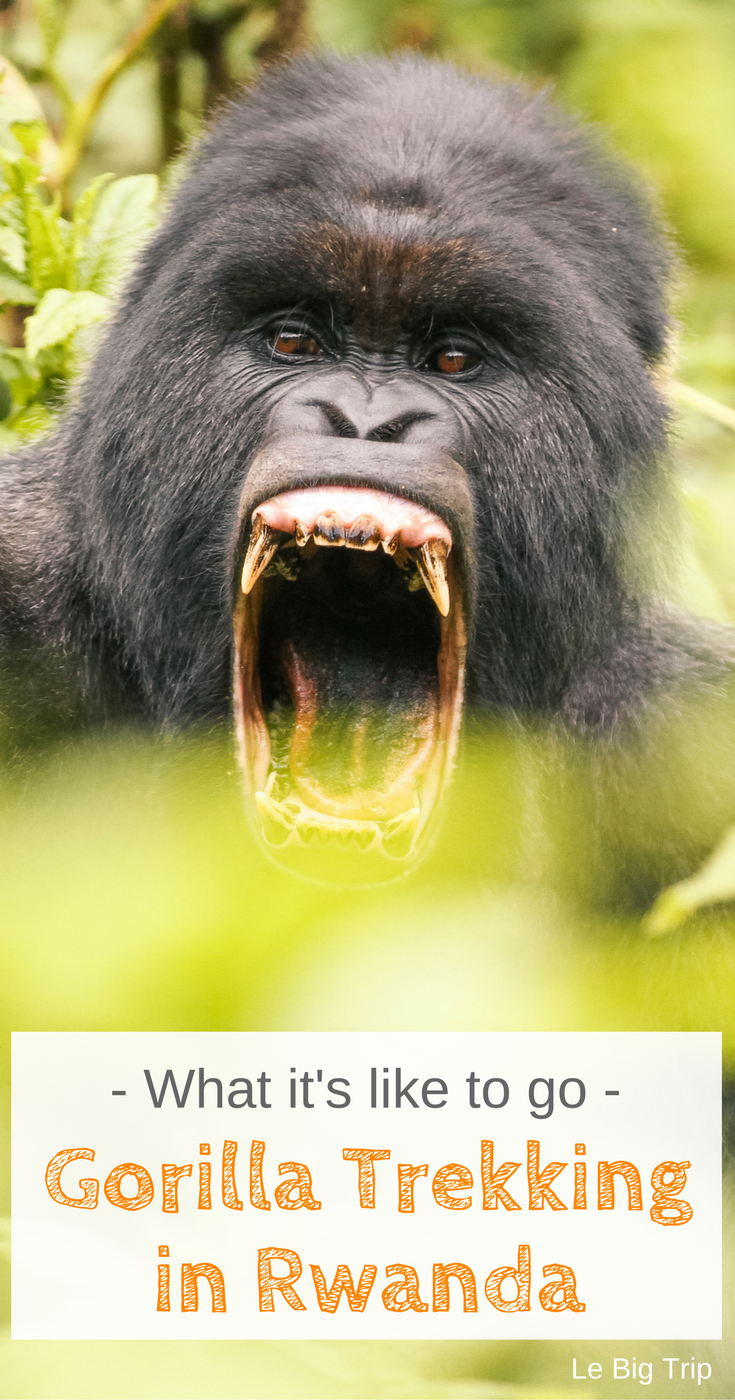


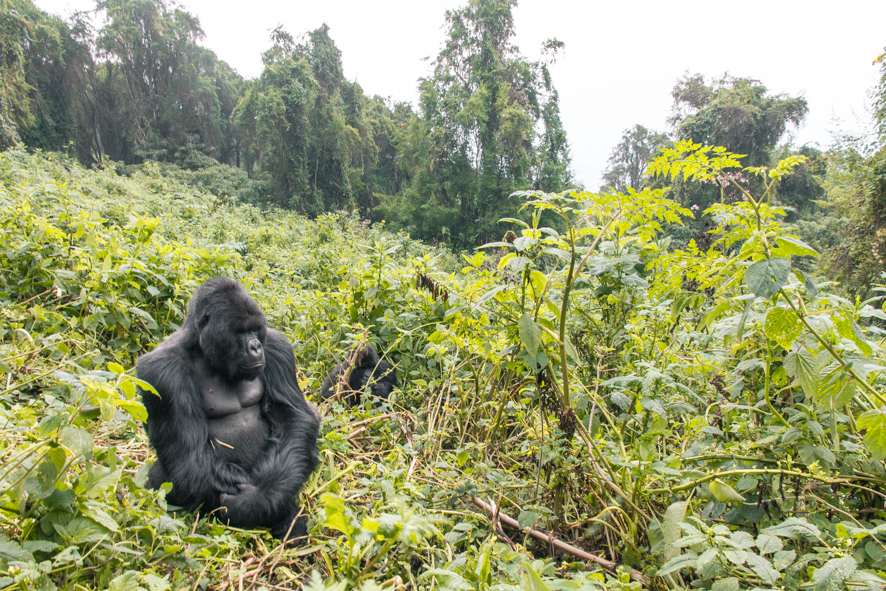
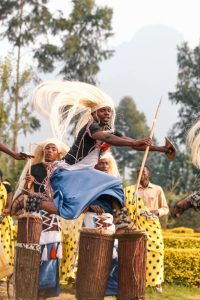
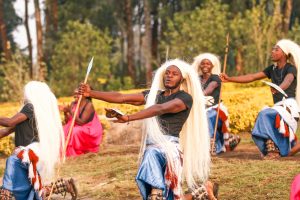


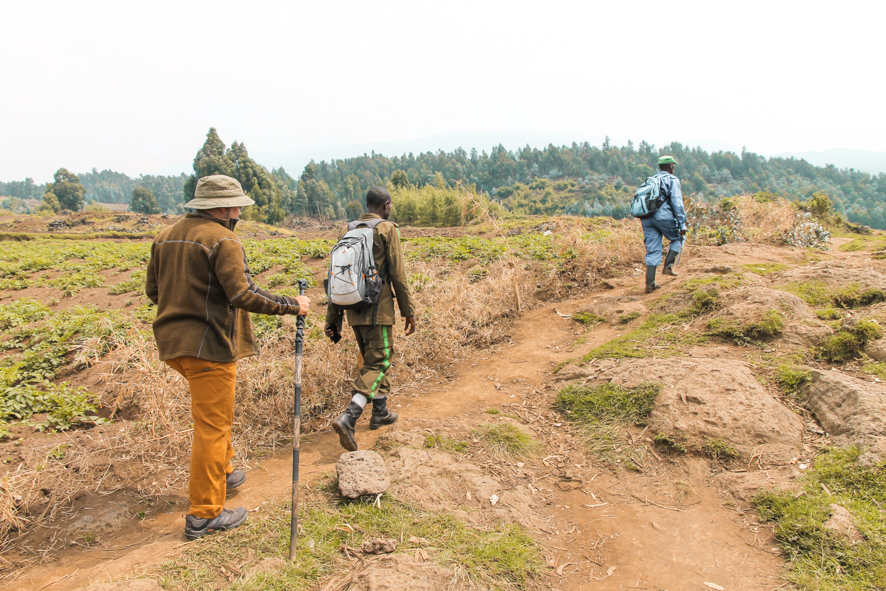
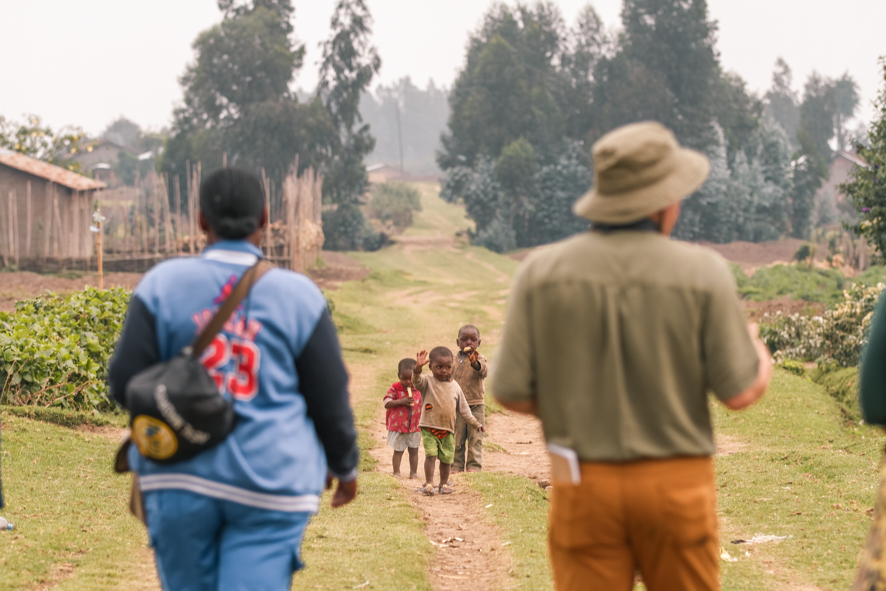
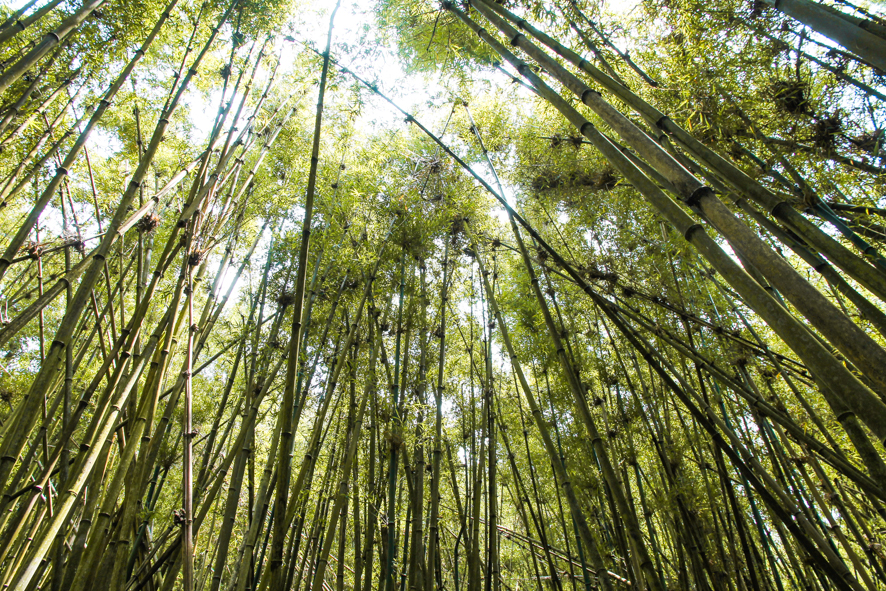
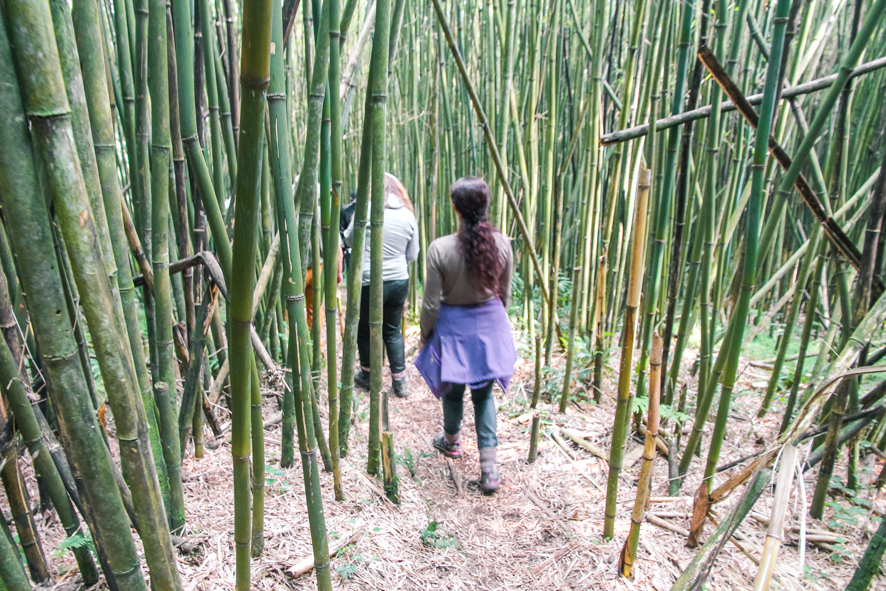
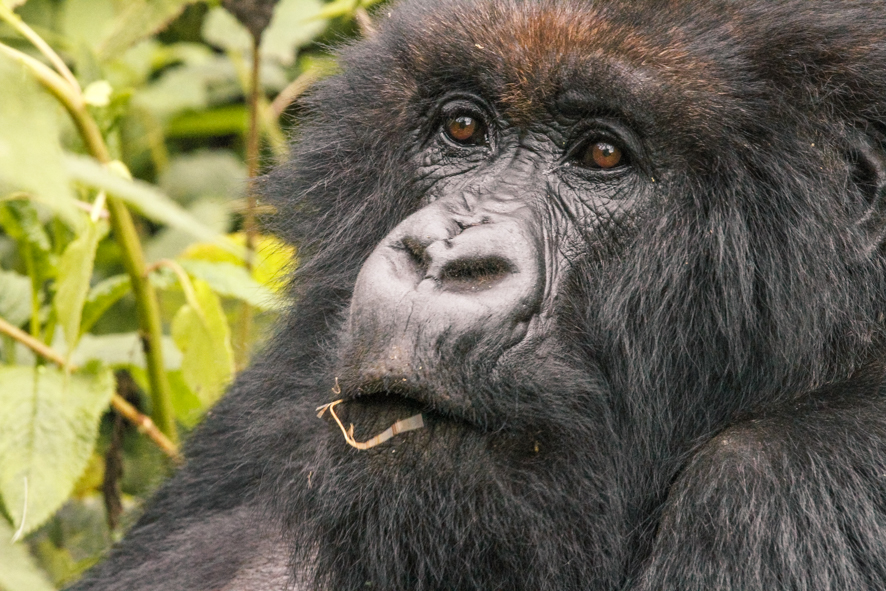
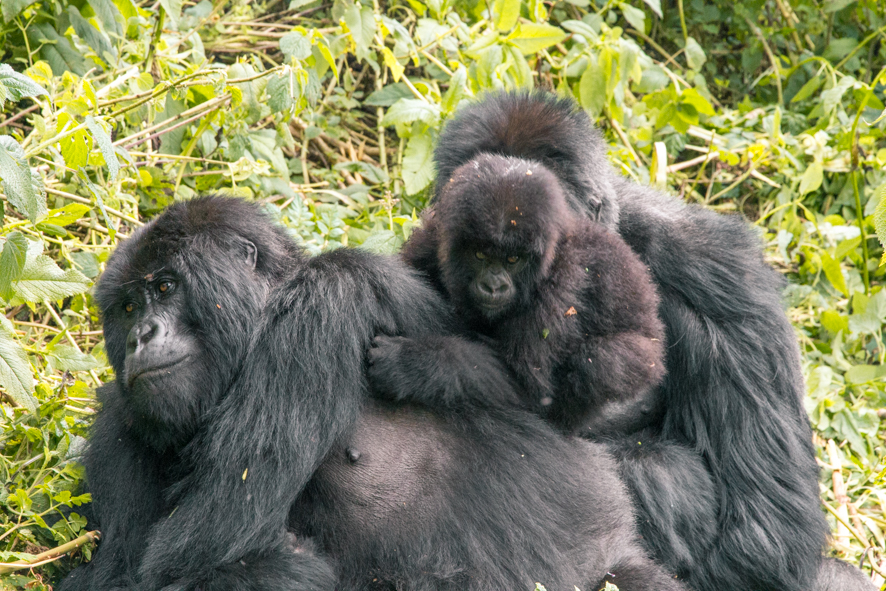
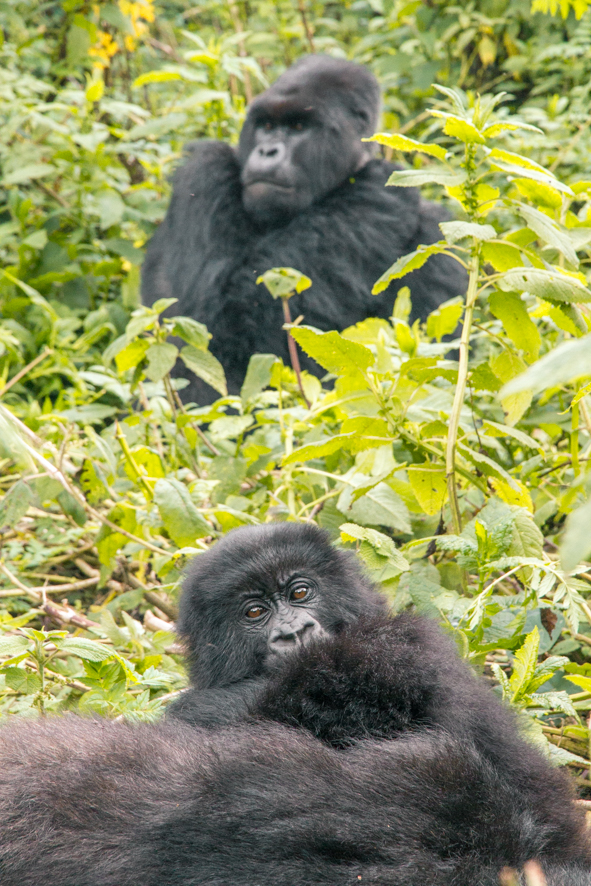
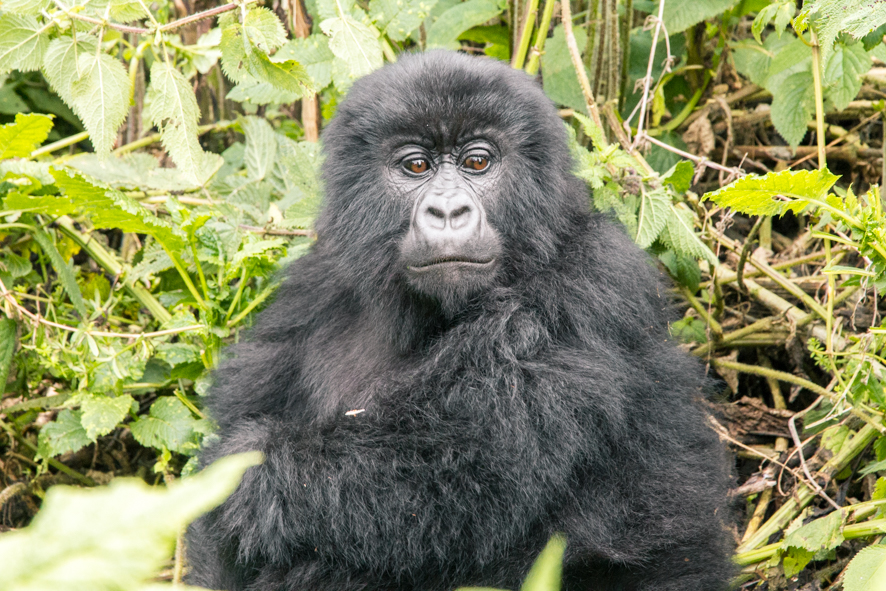
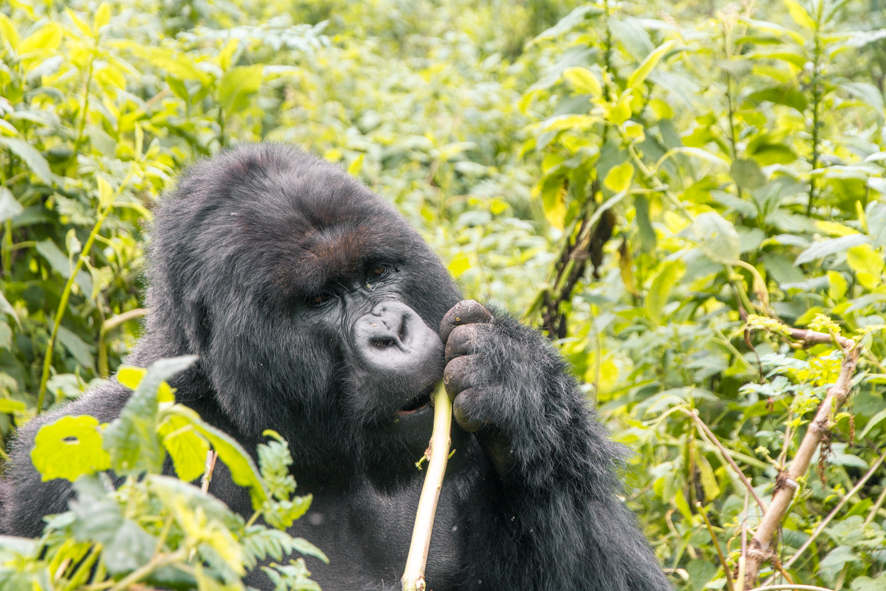
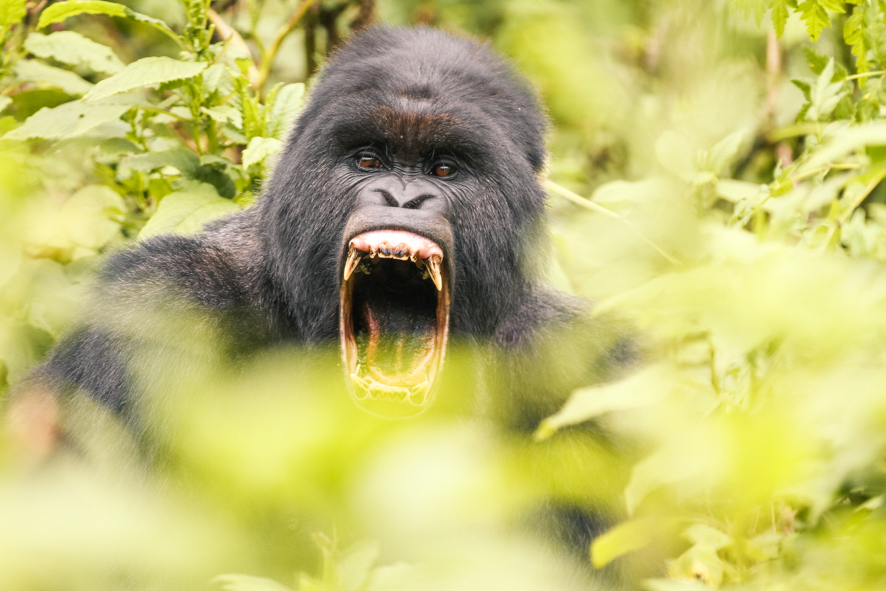
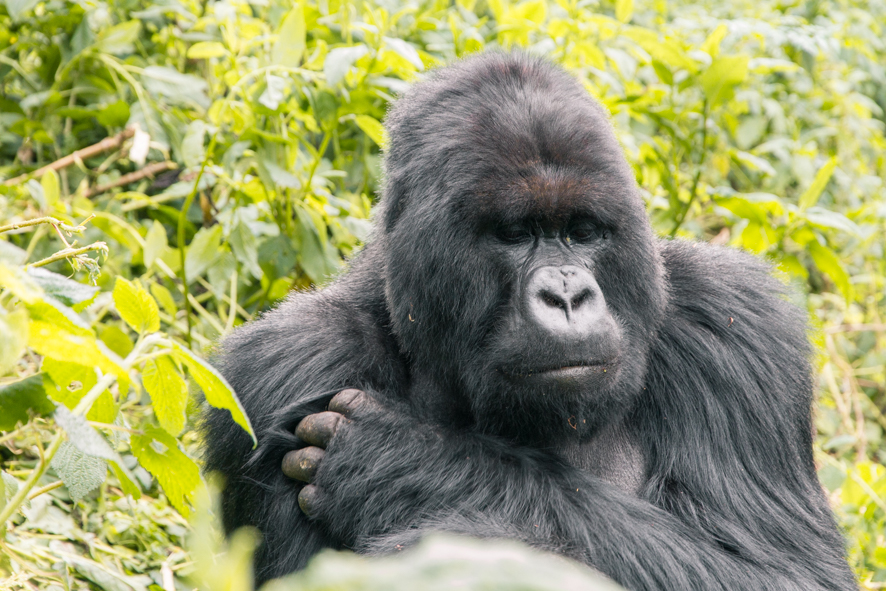
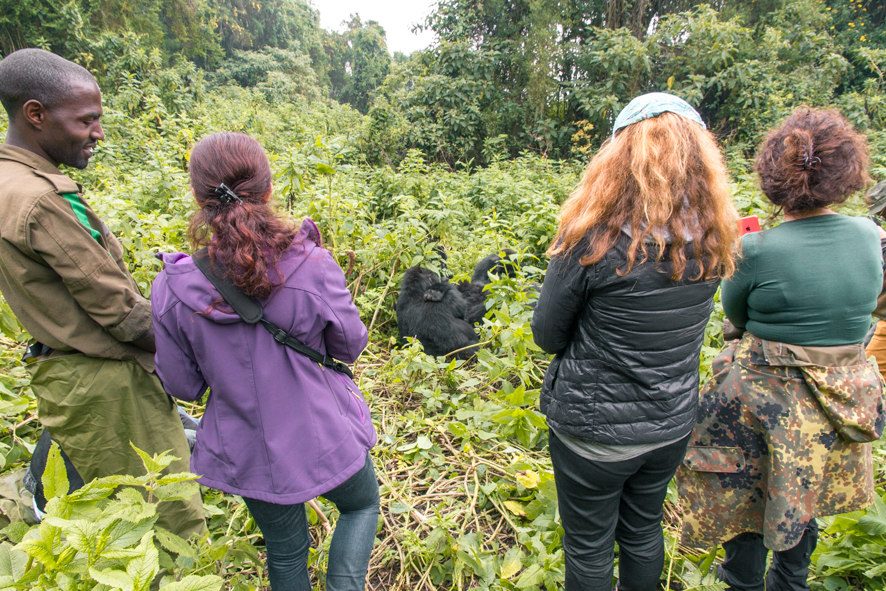
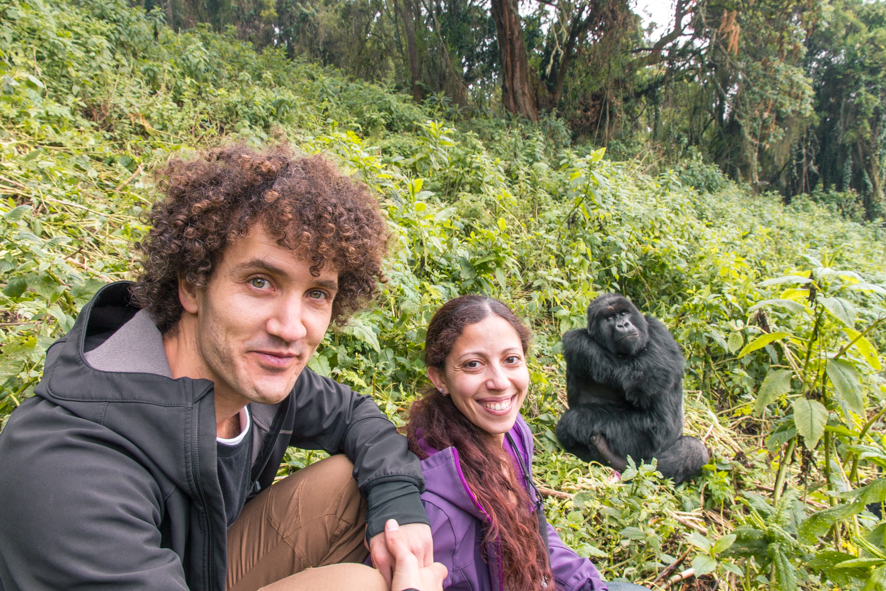
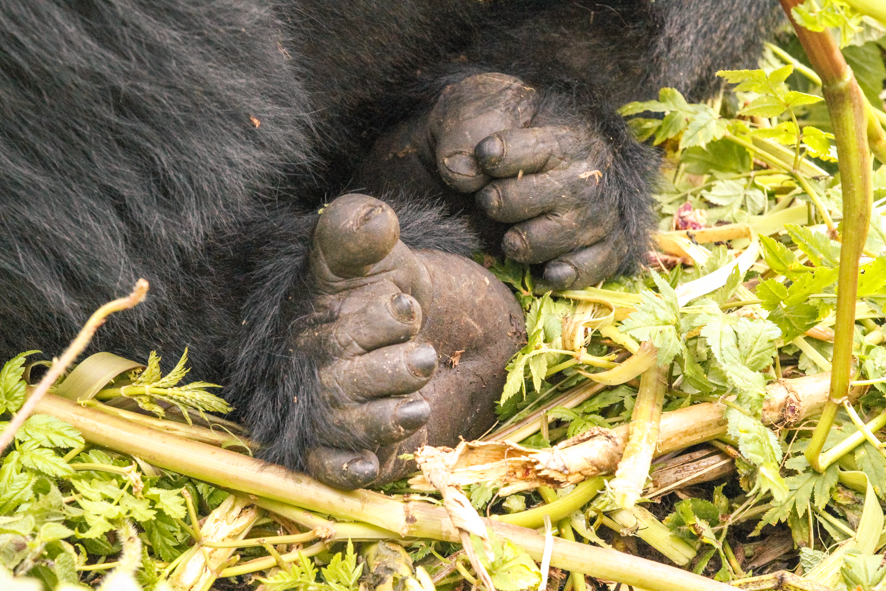
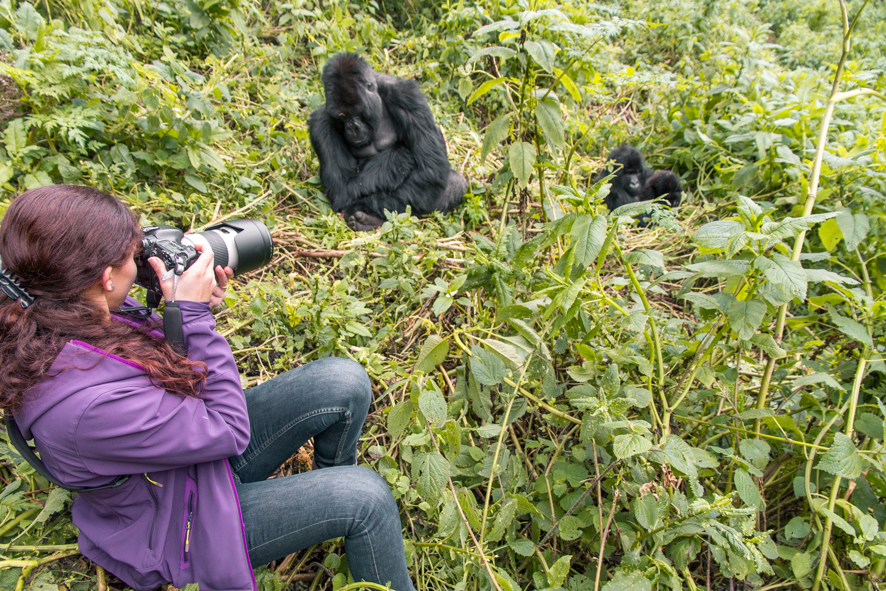
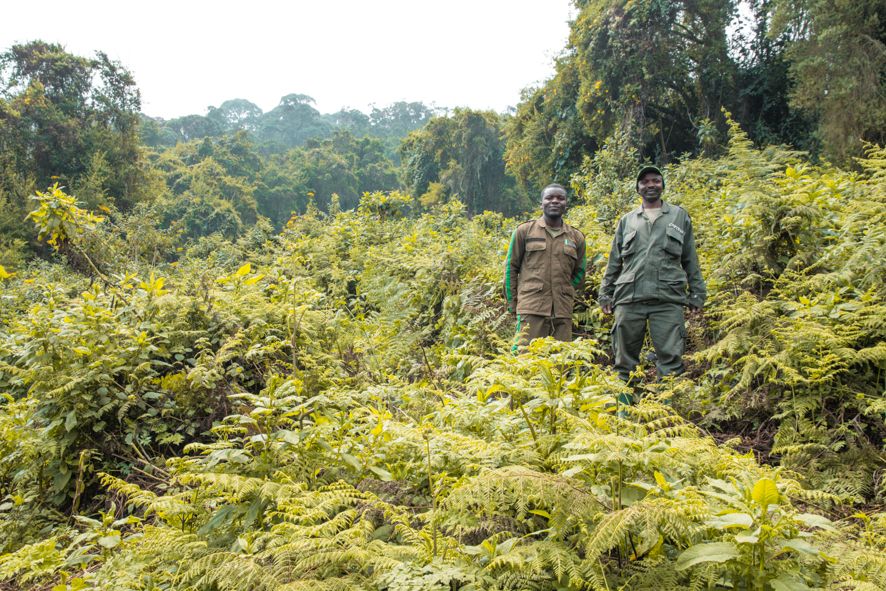



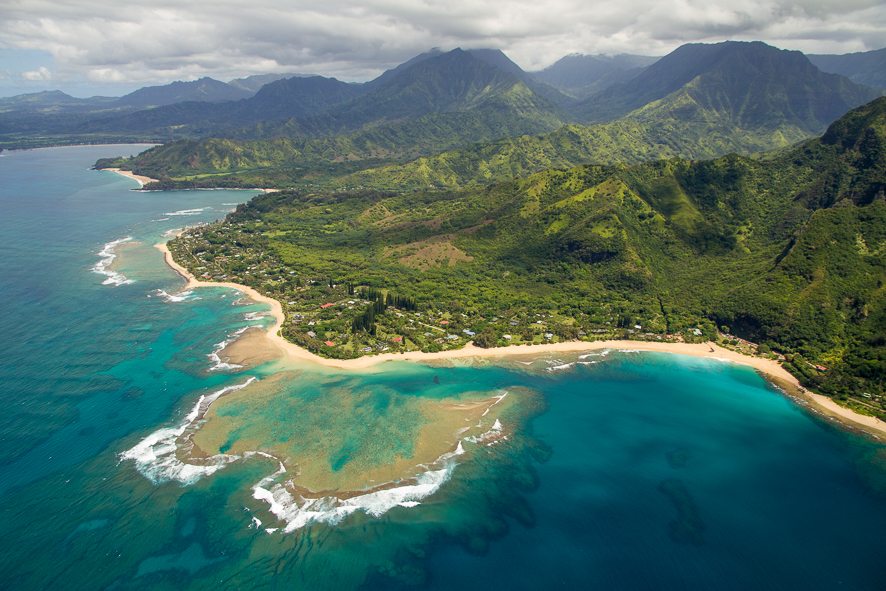
Pingback: 5 reasons to visit Rwanda now | Le Big Trip